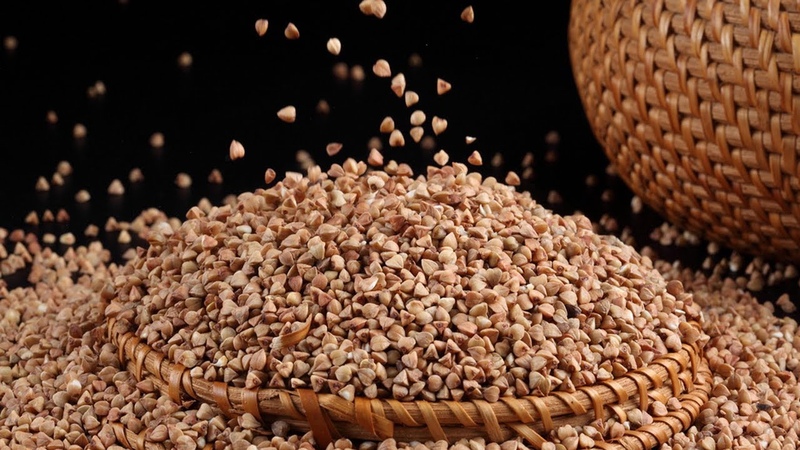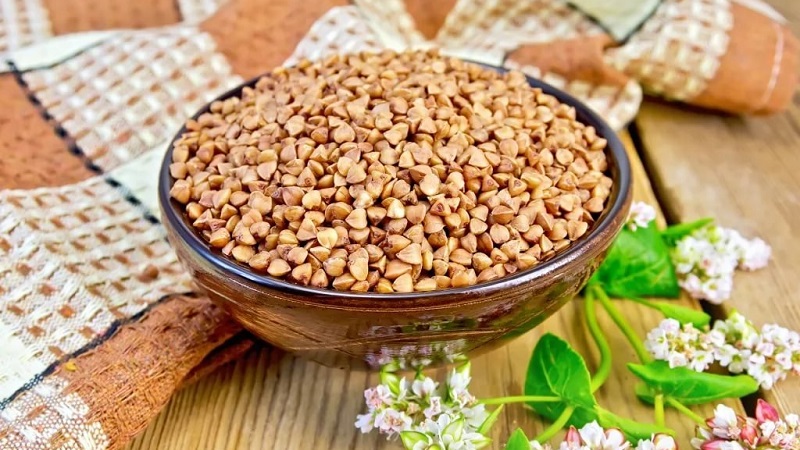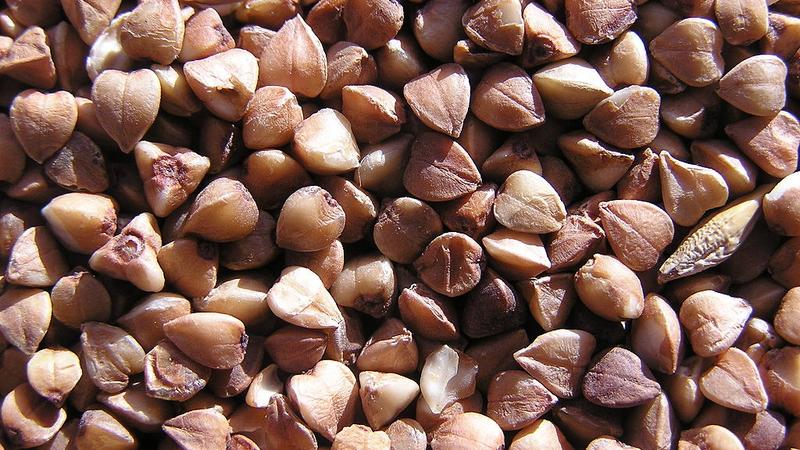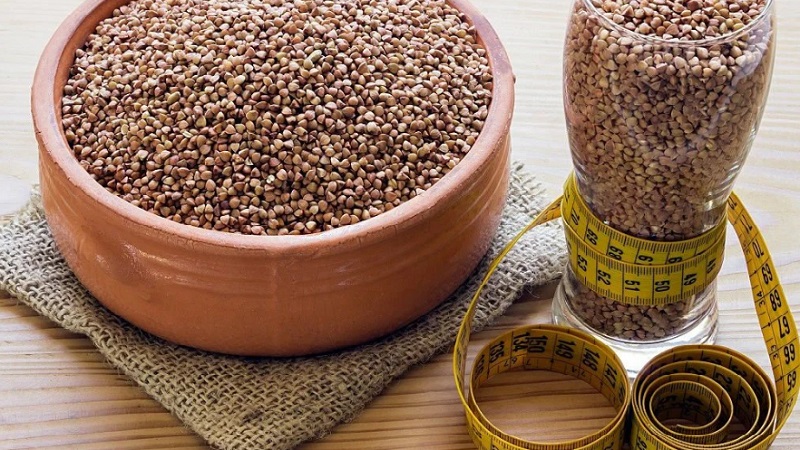What kind of buckwheat is the largest - a detailed description
In order for the diet to be balanced, and the person received all the elements important for the body, cereals must be included in the menu. It is a rich source of minerals and vitamins. Buckwheat is one of the most popular cereals in Russia. It is not only tasty, but also a healthy product, unpretentious to grow and easy to prepare.
The content of the article
What is the name of the largest variety of buckwheat

When choosing buckwheat, they are guided by the “size = quality” standard. Large buckwheat is whole grains and is called "Unground"... In production, the fruit film-shell is separated and the whole grains are sorted. All that remains in the sieve after is the kernel.
Buckwheat is distinguished (popular name - chop). These are kernels, chopped into small pieces.
Reference! Buckwheat has been known to people for over 5 thousand years. India and Nepal are considered the places of its appearance. With the development of trade and navigation in the 15th century, the culture began to be grown in Japan and China. Later she appeared in the Caucasus and only then was popularized in Europe.
The plant has white (less often pink) flowers, consisting of 5 petals, with a bright aroma that attracts bees. Buckwheat blooms in June, yields in September. The fruits have an interesting triangular shape measuring 6 * 7 mm. The color of the beans is coffee-green, they turn brown after roasting. Green unground the most useful, as it contains the maximum number of valuable components and retains the ability to germinate.

Buckwheat composition:
- protein (up to 13% of the total volume);
- B vitamins;
- alimentary fiber;
- vitamins PP, E, K;
- organic acids (oxalic, malic, citric and others);
- macroelements: potassium, silicon, magnesium, sulfur, phosphorus;
- trace elements: iron, cobalt, manganese, copper, molybdenum, selenium, zinc, chromium.
Beneficial features:
- strengthens the immune system;
- improves the condition of the liver, digestive tract, circulatory system;
- lowers high blood pressure;
- stabilizes blood sugar and cholesterol levels;
- removes toxins and radionuclides;
- suitable for celiac patients as it does not contain gluten.
100 g of kernel contains:
- 12.6 g protein;
- 2.7 g fat;
- 68 g of carbohydrates.
Energy value - 329 kcal, while low glycemic index - 60 units. Buckwheat is allowed for use by people with diabetes.
Varieties and types of unground

Product quality requirements are determined by GOST R 55290-2012 “Buckwheat groats. General specifications (as amended) ". According to this document, buckwheat, depending on the processing method and the quality of the final product, is divided into 4 types:
- unground (unsteamed);
- done (not steamed);
- steamed unground (quick-cooking);
- done steamed (fast-cooking).
They are not divided into varieties, but among the kernel they distinguish 4 varieties:
- higher;
- the first;
- second;
- third.
GOST defines the standards for the organoleptic characteristics of the product. So, all 4 varieties of non-steamed core should be cream in color with a greenish or yellowish tint. Steamed buckwheat comes in all shades of brown. The smell and taste of the product should be characteristic, not have foreign impurities, not be sour, bitter, musty or moldy.
Requirements for the physicochemical parameters of a fast-digesting kernel:
- Top grade. At least 99.35% of the total mass of the product must be sound. The permissible maximum part of split kernels is no more than 2%, non-peeled kernels - 0.15%, trash - 0.3%. Organic impurity is not allowed.
- First grade.98.9% of cereals are good-quality raw materials, no more than 3% of split kernels, 0.3% of non-exfoliated, 0.4% of trash impurities (including organic impurities, but not more than 0.05%).
- Second grade. 98.5% of the product is benign. In this mass, the presence of split grains in an amount of no more than 4% is permissible, non-peeled grains - 0.4%, trash - 0.5%, organic - 0.05%.
- Third grade. Good quality grains should be at least 97.2%. The presence of cracked buckwheat is allowed - no more than 5%, unhulled - 0.7%, trash - 0.6%, including organic - 0.1%.
The moisture content of such cereals for current consumption should not exceed 14%, for long-term storage - 13%. For non-steamed kernels, this indicator is set at the level: current consumption - 15%, long-term storage - 14%.

Important! The cooking time for all varieties is no more than 25 minutes.
Infestation and contamination of the product by pests is unacceptable. Such cereals are considered illiquid.
Steamed kernel of the highest and first varieties used for the preparation of baby food and has increased quality requirements. It does not allow the presence of spoiled kernels, the use of pesticides is prohibited at all stages of cultivation.
If the kernel contains more than the permissible amount of split kernels, the cereal is classified as a trash.
GOST characterizes impurities as follows:
- Split kernels - the grains pass through a sieve, the holes of which are 1.6 * 20 mm, but do not slip through the holes of the sieve No. 08.
- Unshelled grains - unground, which is not peeled from the fruit shell.
- Weed admixture is mineral (for example, earth, sand or pebbles) and organic (parts of leaves, weeds, stems, buckwheat shells), contains seeds of other plants.
- Broken kernels - partially or completely rotten, covered with mold, charred whole and pieces of buckwheat kernels.

Each batch of grain that goes into production is accompanied by a certain certificate and document confirming the safety and quality of products.
The manufacturer is obliged to put quality information on the packaging, displaying the name of the cereal, type and variety, date of cultivation, manufacturer's data, nutritional value and shelf life.
Conclusion
The secret of delicious porridge, including buckwheat, is not only in its correct preparation. First of all, it all depends on the quality of the cereal used, its freshness, and the purity of the composition. If the product is of the highest quality, the buyer does not have to spend extra time sorting. This kernel has a standard grain size that is boiled at the same time.